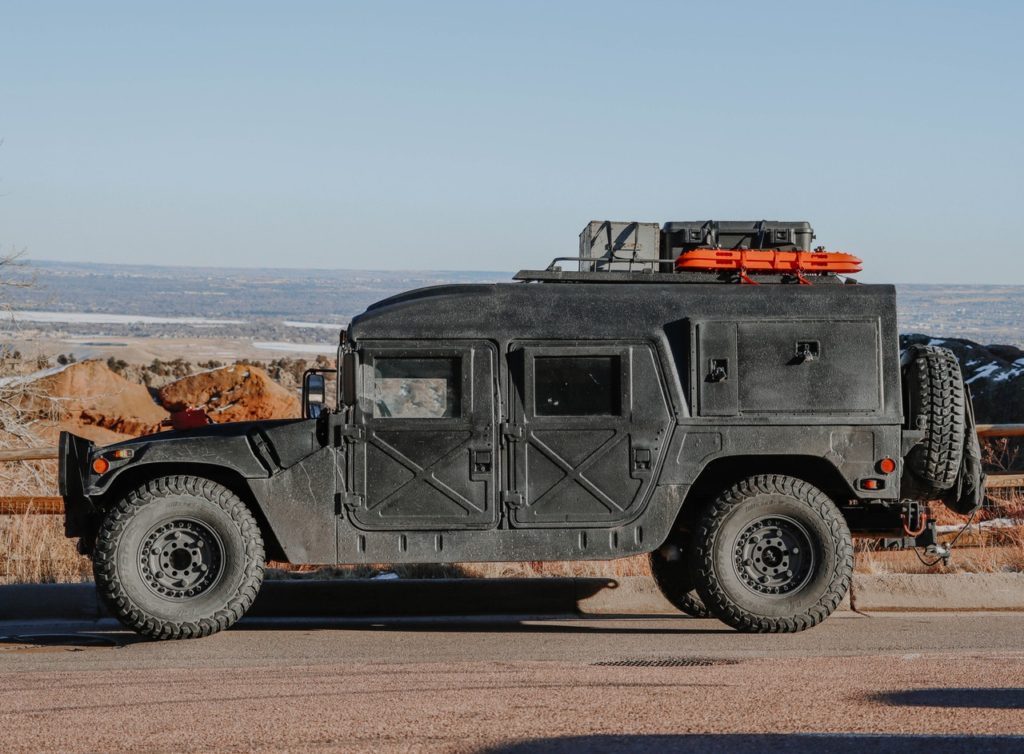
Self-sealing tires have a layer of sealant along the inside of the tire. The sealant is usually a thick rubbery liquid that is injected through the valve into the tire. As the tire spins, centrifugal force keeps the liquid on the inside of the tire. If a nail or something punctures the tire, the sealant is forced into the hole by the centrifugal force and the escaping air and seals it. It can seal any type of hole up to about 5mm. The tire doesn’t lose pressure and can still be driven on. This type of system won’t work if the hole is in the wall of the tire.
The second type of run-flat tire are called self-supporting. The tires on your car are made of rubber and are supported by the pressure of the air inside them. When you have a puncture, that air pressure is gone and the tires collapse. Self-supporting tires have a very strong tire wall that can support the weight of the car even without the air pressure. These tires are 20 to 40% heavier than regular tires so they don’t roll as easily and reduce the economy of the car.
The last type of run-flat tires are called auxiliary-supported. These kinds of tires have a ring of hard rubber that goes around the rim of the wheel that can support the weight of the car. When there is a puncture, the tire deflates and the car can continue to drive on the hard rubber.
None of these three types of system is a completely perfect run-flat system. They will keep the car driving for about 80km at about 80km/h, but if you keep going too far or too fast, the tire will disintegrate, just like a regular tire.
Auxiliary supported tires are probably the most reliable out of these three types, which is why they are used on military vehicles and the president of America’s car. Self-sealing tires and self-supporting tires wouldn’t do exceptionally well in an ambush situation. A police stinger, for example, would be able to stop self-sealing tires and self-supporting tires. A stinger injects lots of small tubes into the tire, which the liquid rubber in the self-sealing tires would not be able to fix. The multiple punctures would also weaken the self-supporting tires. The auxiliary support tires would still be able to run on the band of solid rubber inside them. They wouldn’t be able to go at full speed and the car wouldn’t handle brilliantly, but it would get them out of an ambush.
Robert William Thomson invented the first pneumatic rubber tire in 1847, although it never took off. John Boyd Dunlop came up with the pneumatic tire that would go on to be mass produced. He was a vet and he was trying to come up with a way of preventing his son’s headaches when he rode his bicycle. Wheels were made of wood or metal, which are not very well insulated. Dunlop invented his tire for bicycles, but the pneumatic tire would end up on cars.
The first run-flat tire was invented in 1934. Early tires were very susceptible to punctures and a failing tire at speed could cause a blow-out. Run-flat tires were invented as a solution to this. The tire had a piece of hardened fabric inside it that would support the tire if it failed and allow the car to keep driving for a short distance.
The auxiliary supported tires were invented by Michelin in 1935. The tire had a wheel of hardened rubber inside it that the car could drive on if the wheel failed. They were sold to the military and also to bank security trucks.
Run-flat tires sound like a good idea, but they are heavy so they reduce the car’s efficiency. They are also expensive. Because they use special designs, if you do get a puncture, the tire cannot be repaired and has to be replaced. Run-flat tires only make up about 1% of the entire tire market.
The future of the run-flat tire market could be interesting. A number of tire companies are currently researching airless tires. If there is no air from the beginning, then there is no problem with punctures. Nano technology could create tires that really do fix themselves as you drive.
Tires themselves are also going to have to evolve into the future. About 200 million tires are thrown away every year and one tire company is looking at using a rubber synthesized from dandelions.
A Japanese company is working with the tread on the tires, as well. They want to significantly reduce the noise that the tire makes on contact with the road. We don’t notice the noise from our tires in a regular car, but once we are all driving much quieter electric cars, it will be noticeable.
So, there are three types of run-flat tire: self-sealing, self-supporting, and auxiliary supported. And this is what I learned today.
Photo by Jacob Moore from Pexels
Sources:
https://en.wikipedia.org/wiki/Run-flat_tire
https://en.wikipedia.org/wiki/Tire
https://www.bridgestonetire.com/learn/tire-technology/run-flat-tires/#
https://www.national.co.uk/information/run-flat-tyres
https://blog.blackcircles.ca/en/tips-guides/how-do-self-sealing-tires-work/
https://www.autotrader.ca/editorial/20171024/run-flats-vs-self-sealing-tires/

